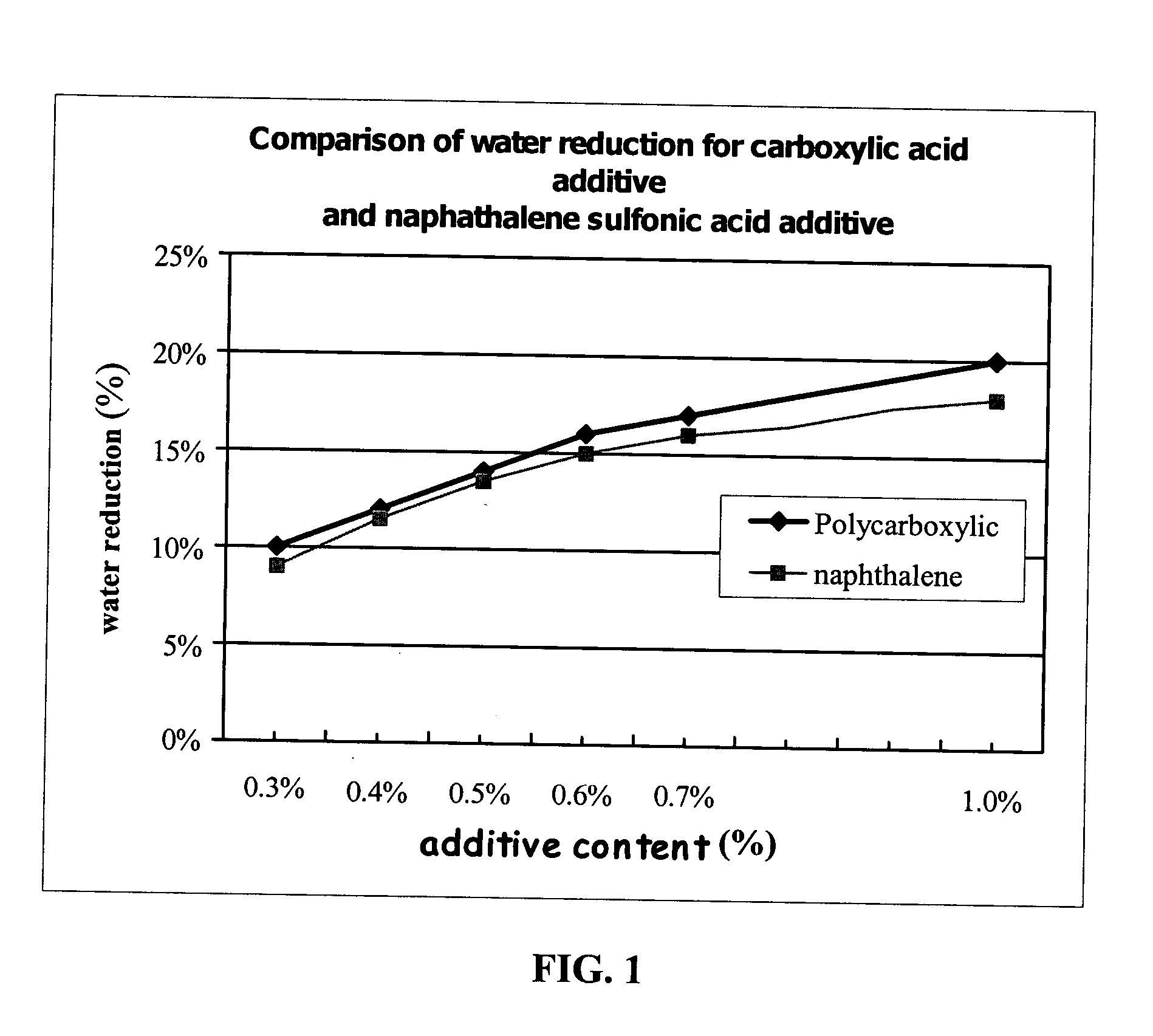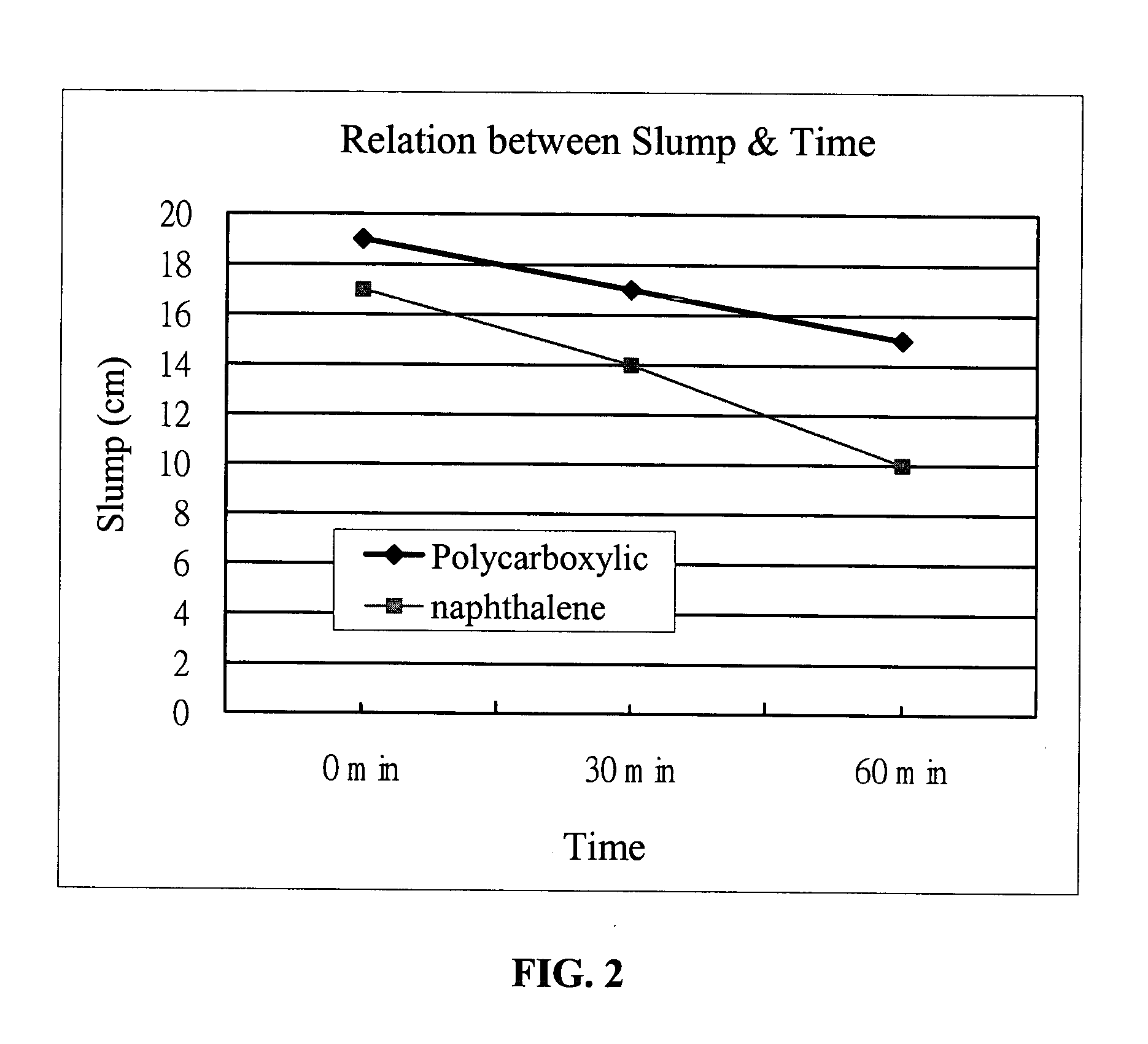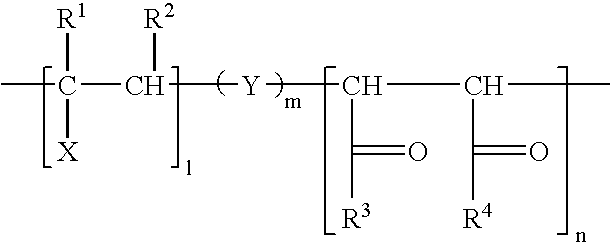Concrete admixture additive
- Summary
- Abstract
- Description
- Claims
- Application Information
AI Technical Summary
Benefits of technology
Problems solved by technology
Method used
Image
Examples
example 1
Put 5 units of norbornene, 25 units of maleic anhydride and 0.5 unit of AIBN in a reaction flask. Add 200 mL of benzene as solvent. Agitate the mixture for 10 minutes, followed by slow heating. Let the mixture react at 80° C. for 2 hours. After filtration, a white solid compound can be obtained. This product is a copolymer of norbornene and maleic anhydride, with average molecular weight of 4500.
example 2
Put 2.5 units of norbornene, 2.5 units of styrene, 25 units of maleic anhydride and 0.5 unit of AIBN in a reaction flask. Add 300 mL of benzene as solvent. Agitate the mixture for 10 minutes, followed by slow heating. Let the mixture react at 80° C. for 3 hours. After filtration, a white solid compound can be obtained. This product is a terpolymer of norbornene, styrene and maleic anhydride, with average molecular weight of 5600.
example 3
Put 26.5 units of styrene-maleic anhydride copolymer (3:10 molar ratio, average molecular weight 3800; Sartomer SMA® EF-30) in 100 units of isopropanol. Add 21.2 units of methoxy polyethylene glycol amine (EO:PO=32:10, average molecular weight 2000, Huntsman Jeffamine® M-2070). Heat the solution up to 90° C. Conduct the reaction under agitation for 5 hours. Add 1 M sulfuric acid and continue the reaction for 4 hours. Finally, neutralize the solution by 1N NaOHq. The product obtained is a brown, viscous liquid (Polymer E1).
By using the procedures in the example, we can obtain a series of glycol amine derivatives of styrene-maleic anhydride copolymer in different molar ratios by reacting it with methoxy polyethylene glycol amine with average molecular weight of 2000. The derivatives are in a viscous liquid state.
PUM
| Property | Measurement | Unit |
|---|---|---|
| Temperature | aaaaa | aaaaa |
| Temperature | aaaaa | aaaaa |
| Percent by mass | aaaaa | aaaaa |
Abstract
Description
Claims
Application Information
 Login to View More
Login to View More - R&D
- Intellectual Property
- Life Sciences
- Materials
- Tech Scout
- Unparalleled Data Quality
- Higher Quality Content
- 60% Fewer Hallucinations
Browse by: Latest US Patents, China's latest patents, Technical Efficacy Thesaurus, Application Domain, Technology Topic, Popular Technical Reports.
© 2025 PatSnap. All rights reserved.Legal|Privacy policy|Modern Slavery Act Transparency Statement|Sitemap|About US| Contact US: help@patsnap.com



